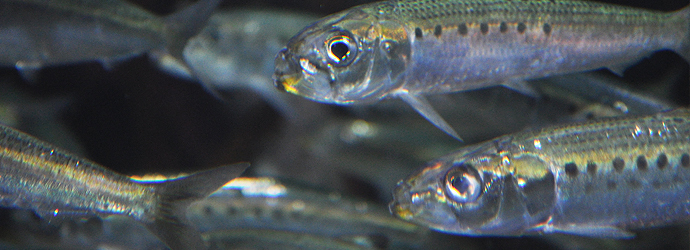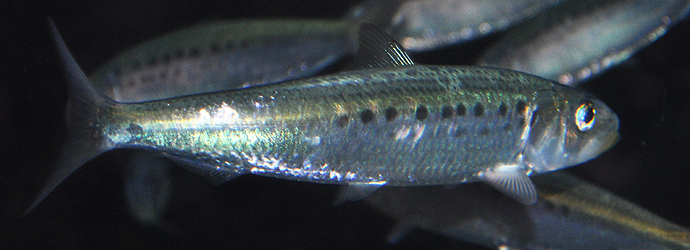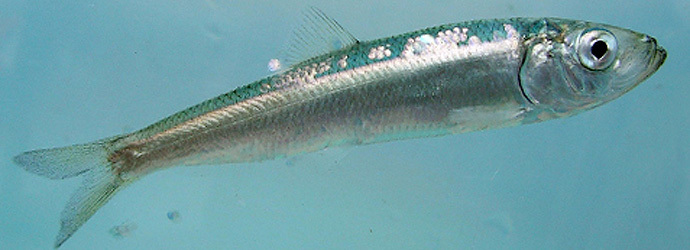Clupea pallasii
Clupea pallasii are commonly called Pacific herring. The herring gets its name from the German explorer Peter Simon Pallas. They are one of 200 species that belong to the clupeidae family. They are also part of the animalia kingdom and are classified under the chordata phylum. Clupea pallasii are recognized with their single dorsal fin and a protruding lower jaw. Their coloring ranges from dark blue to olive on their backs and then usually blends to silver on their sides and belly. They can get up to 18 inches in length. They are most commonly found in the eastern and western North Pacific. They are found anywhere from the surface to 1,300 feet below the surface. Unfortunately for the herring they fall prey to many other organisms. They also travel in schools, making them an easy target. Not only are adults targeted, but also their eggs. Most herring live to be about 12 to 13 years old, but they oldest one found was actually approximately 25 years of age.
Fun Facts:
When herring migrate to the shorelines to breed, they do not
eat.
Herring swim with their mouths open to take in their food.
They have no scales on their head or gills.
Herring are one of the most abundant fishes in the ocean, because
they are such a great supply of food to other animals.
They swim in schools in the same direction as the shoreline, for
reproduction purposes.
Herring have been used in human lives since 3000 BC.
Herring sperm helped Folke Skoog discover the plant hormone cytokinin.
90% of the reason herring are caught is for their eggs.
Washington, California, and Alaska harvest the most Clupea
pallasii.
Want to learn more about other organisms?
Check out other
websites created by students just like me at
bioweb.uwlax.edu.
Last revised 4/20/2012


